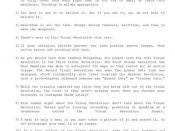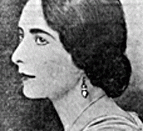Despite being separated by only a few years since the time of their respective conceptions, the differences between the expressed female (and feminist) values in Mina Loy's 1913 unpublished document, "Feminist Manifesto," and her later compilation, "Songs to Joannes" (published in 1917), are tangible. The "Manifesto" is explosive and modernist in appearance; it pits men and women against one another, denying them equal ground by asserting in large underlined font to "be brave and deny at the outset- that pathetic clap-trap war cry woman is the equal of man- for she is NOT!" (153) and that "men and women are enemies, with the enmity of the exploited for the parasite, the parasite for the exploited" (154). In this "Manifesto," Loy separates men and women with one exception: engaging in intercourse. This stark independence/ division between the sexes is far less resolute in "Songs to Joannes," where this pact of sorts between men and women, sex, fails in the wake of what is presumably a terminated pregnancy, and the woman in question, the voice of these "Songs," displays a mild need for the man.
I posit that while both works display discernable feminist and futurist values, the subject of maternity in both pieces prevent both works from falling under any distinct branch of theory.
The first wave of feminism was noticeably in action around the mid-nineteenth century, though the term "women's suffrage" was used at the time, as the word feminism wasn't coined until the twentieth century and the designation of the suffrage movement as the first wave was not used until after what is known as the second wave began; it became known as the first wave to differentiate between the goals of both movement eras. The concept behind the women's suffrage movement was just that, a coalition of...


